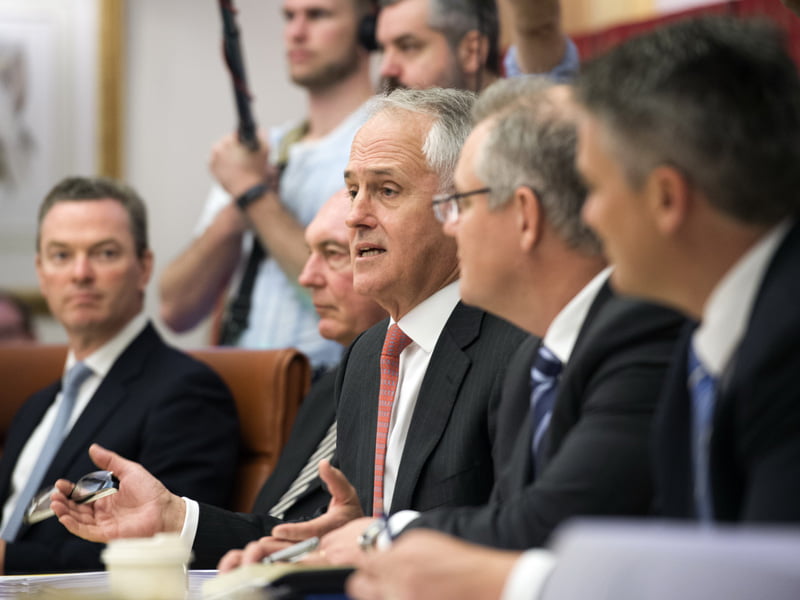The Prime Minister Malcolm Turnbull last night chaired the first meeting of the Innovation and Science Committee of the Cabinet. The meeting marks the first time a Cabinet-level committee has steered innovation policy in this country.
For the tech industry, and for the innovation sector more broadly, this is exciting. For a decade we have been saying that until it is the Prime Minister who is driving the cross-portfolio sweep of issues that make a difference to building a local, export-focused technology capability, then we would always struggle.
Well, we now have that Prime Minister. It is on innovation policy where this government is on its most solid footing. This is where Mr Turnbull has most convincingly outlined a grand vision, and where government has step-by-step begun mapping a credible path to achieving it.

The Innovation and Science Committee is not a business-as-usual, run-of-government committee like that of Expenditure Review or National Security, or Parliamentary Business or Governance. It is rather the one Cabinet-level committee pulling levers across the economy to build the national capability and to create new economic capacity.
(The other Cabinet committee that doesn’t get mainstream play is on Digital Transformation, the cabal of ministers seeking to re-make the Australian Public Service through the Uberisation – yes, it is a word – of the relationship between citizens and government.)
These are the most interesting bits of this government. When Malcolm Turnbull used his first press conference as Prime Minister to talk about the big themes of innovation and agility across the economy, it took a while for the mainstream media to take him at his word.
And there was an underwhelming reaction in the mainstream to the $1.1 billion National Innovation and Science Agenda. As if $1.1 billion is too small a number, that somehow it represented a stunted ambition.
The centrality of innovation and science policy to the overall economic narrative – the vision – is still dramatically under-recognised. The Press Gallery in Canberra has spent a decade talking about a lack of narrative. The Howard Government lost its narrative, Rudd-Gillard-Rudd had no narrative, Abbott’s narrative was both confronting and confusing.
The Turnbull Government’s narrative is tied directly to its innovation and science policy. The business-as-usual challenges still exist (in spades), but the shape of economic policy comes back to that innovation agenda.
Still, it is undeniable that Malcolm Turnbull has had a shocking week. How the government managed to so comprehensively tie itself in a knot over tax policy without actually doing anything was something to behold.
With that kind of news on offer, no-one frankly gives a crap whether the first Cabinet committee on innovation and science met or not. But regardless, it did, and this is one area where this government has been methodical in creating the machinery to get some things done.
The members of the committee are the Prime Minister, the deputy PM Barnaby Joyce, Foreign Minister Julie Bishop, Treasurer Scott Morrison, the Industry Minister Christopher Pyne as deputy chair, Health Minister Sussan Ley, Education Minister Simon Birmingham, Trade Minister Steven Ciobo, Cabinet Secretary Arthur Sinodinos, Assistant Cabinet Secretary Peter Hendy, Assistant Minister for Science Karen Andrews and Assistant Minister for Innovation Wyatt Roy.
We are told the meeting’s agenda included discussion about the so-called ‘Landing Pads’ being set up off shore in San Francisco, Tel Aviv and the three other (unnamed) locations. It also discussed planned tax-breaks for angel investors and the realignment of the R&D tax incentives to better serve smaller, innovative companies. It also discussed entrepreneur visas.
All of these things are currently subject of a public consultation process.
It is a fair bet that the committee also got updates – and possibly approved – the members of the powerful new Innovation and Science Board being chaired by venture capital veteran Bill Ferris (with the Australian Government Chief Scientist acting as deputy.)
This board report through Christopher Pyne – but has a dotted line directly to the Prime Minister. It is an independent, statutory body that provides strategic, whole-of-government advice on all science, research and innovation matters.
There a regulatory and legislative changes that need to be made to create the board’s secretariat body, the Office of Innovation and Science Australia. It has appointed head-hunters to find a CEO, and it is building a staff of seconded public servants from across government (as well as from the private sector.)
It is a fair bet also that a CSIRO update was presented. The CSIRO is getting into the venture capital business, with a $200 million to drive its own freshly prioritised collaboration and commercialisation mandate.
And you can be sure the early discussions on new frameworks for university research funding have been heard, with government seeking to create new incentives that drive better industry collaboration and improved commercial outcomes. This is going to drive people crazy, but it is where this government is heading.
None of this is under the radar stuff. It was all outlined last December as part of the National Innovation and Science Agenda. Some of these policy goals will require hard, hard decisions and it is clear not all of them will be taken prior to the election.
But the direction is set.
Do you know more? Contact James Riley via Email.

